Summary of php array function definition and usage
Operation of array pointer: Operation of moving array pointer: Next() downward and the value of the current element will be obtained at the same time. Prev() will get the value of the current element when going up. End() moves to the last element unit and gets the value of the last element. Reset() moves to the first unit and gets the value of the first element. If the move is unsuccessful, return false. The parameters are all arrays that need to be operated and are passed by reference. Get the information of the element pointed to by the pointer: Key();//Get the subscript of the element pointed to by the current array pointer Current();//Get the element pointed by the current array pointer. Only get the data without moving the pointer. There is also a mixed operation: that is You can get the information (key value) of the current pointer element and you can also move the pointer at the same time. Each(); obtains the information of the current element (key and value information), each. Moving pointer: We can sometimes use the characteristics of each to achieve
1. Recommended php array pointer effects
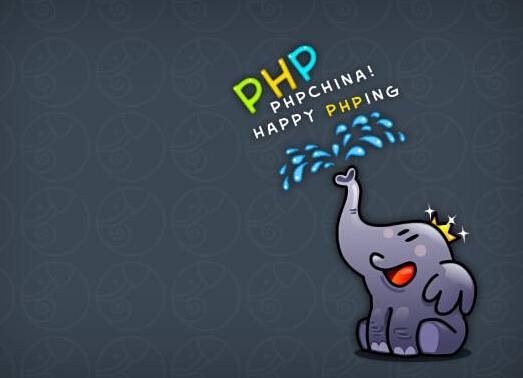
Introduction: Operation of array pointer: Operation of moving array pointer: Next() Down At the same time, the value of the current element will be obtained. Prev() Upward will also get the value of the current element. End() Move to the last element unit Get the value of the last element. Reset() Move to the first unit Get the value of the first element. If the move is unsuccessful, return false. The parameters are all arrays that need to be operated and are passed by reference. Get...
##2. 10 recommended articles about php arrays

Introduction: PHP array interception, equal division and replacement of partial arrays. In this article, we will introduce the interception of arrays (array_slice), equal division (array_chunk) and replacement (array_splice) and The difference between array_slice and array_splice! In the previous three articles "How to sort PHP arrays?" "Random shuffle and reverse order of PHP arrays" and "Reverse order of PHP arrays", we introduced the sorting of arrays, including ascending and descending order of arrays. As well as disorder and reverse order, I believe everyone is familiar with arithmetic...
3. Definition and usage of php array function array_push()
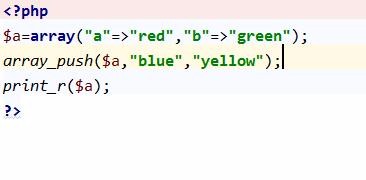
Introduction: The array_push() function in PHP adds one or more elements (to the stack) to the end of the array of the first parameter, and then Returns the length of the new array. This article introduces the syntax of the php array_push() function and some small examples. Let’s take a look.
4. The difference between array_diff and other methods to implement PHP array traversal

Introduction: Give you two arrays with 5000 elements each, and calculate their difference. To put it bluntly, it means using PHP and the algorithm you think is the best to implement the array_diff algorithm. When I received this question for the first time, I found it to be very simple, so I wrote one based on my past experience:
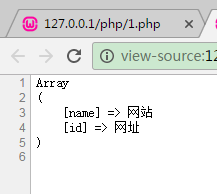
6.
Interception, equal division and replacement of partial arrays in PHP
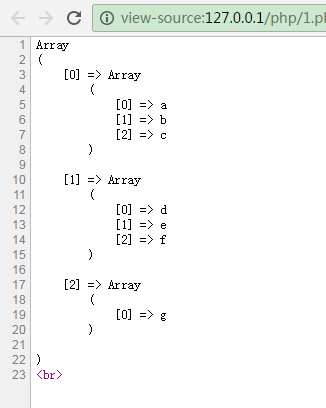
7. Detailed explanation of examples of random shuffling and reverse ordering of PHP arrays Introduction: In the first two articles "How to Sort PHP Arrays" and "Reverse Order of PHP Arrays", two sets of functions were introduced, one in ascending order and one in reverse order (descending order). Today we will introduce this article to you. Random shuffling and reverse ordering of arrays! Introduction: In an article "How to Sort PHP Arrays" we introduced sort, asort and ksort. They all sort arrays in ascending order. So what if you want to implement the reverse order of the array? Here is another set of functions we are going to talk about: rsort, arsort, krsort. Below we will introduce this set of functions one by one! Introduction: In our daily PHP array development, sorting of arrays is indispensable in many projects. So there are several sorting methods in PHP arrays, namely: asort() function and ksort() function. I will introduce them to you one by one today! 10. Detailed explanation of usage examples of foreach traversing arrays in php arrays (picture) Introduction: When we use foreach to traverse an array, we often make mistakes due to unclear concepts. Here is a brief introduction to commonly used foreach operations. 11. How to remove duplicate elements from a PHP array Introduction: The array_unique() function sorts the values of the array elements as strings, and then only retains the first key name for each value and ignores all subsequent key names, which is to delete duplicate elements in the array. 12. How to delete the head, tail, and any elements in a PHP array Introduction: In a previous article, we introduced "How to add elements to the head and tail of a PHP array." Since there are elements to add, there are elements to delete. Today's article introduces it in detail How to delete head and tail elements in an array, as well as arbitrary array elements. 13. How to add elements to the head and tail of a PHP array Introduction: The array_push() function treats the array as a stack and pushes the incoming variables into the end of the array. The length of the array will increase as the number of variables pushed onto the stack increases, and the array is returned. Total number of new units. 14. PHP array and string conversion Introduction: The conversion of strings and arrays is often used in the process of program development. PHP mainly uses the explode() function and implode() function to implement it. We will explain it in detail below. 15. Type of PHP array - numeric index array Introduction: PHP numeric index array generally represents the position of the array element in the array. It is composed of numbers. The subscript starts from 0. The default index value of the numeric index array starts from the number 0 and does not need to be specified. , PHP will automatically assign an integer value to the key name of the index array, and then automatically increment from this value. Of course, you can also specify a certain position to start saving data. 16. Type of PHP array - associative array Introduction: It contains scalar data, which can be selected individually by index value. Unlike arrays, the index value of an associative array is not a non-negative integer but an arbitrary scalar. These scalars are called Keys and can later be used to retrieve values in the array. 17. Types of PHP arrays - multidimensional arrays Introduction: We need to understand that an array is not necessarily a simple list of subscripts and values. In fact, each element in the array can also be another array. 18. What is a PHP array? What are the types of PHP arrays Introduction: An array is a collection of data that organizes a series of data to form an operable whole. Introduction: The following editor will bring you an example of inserting elements at any position in an array and deleting specific elements. The editor thinks it’s pretty good, so I’ll share it with you now and give it as a reference. Let’s follow the editor and take a look ##Introduction: This article introduces PHP array pointers 21. PHP array functions (merge, split, append, search, delete, etc.) Introduction: The array_merge() function merges arrays together and returns a combined array. The resulting array starts with the first input array parameter, and is added sequentially in the order in which subsequent array parameters appear. Its form is: 22. php array function sequence array_unique() - remove duplicate element values in the array Introduction: The array_unique() function removes duplicate values from the array and returns the result array. When the values of several array elements are equal, only the first element is retained and the other elements are deleted. 23. The faster implementation of PHP array deduplication Introduction: Using PHP's array_unique() function allows you to pass an array, then remove duplicate values and return an array with unique values. This article will introduce to you a faster implementation of PHP array deduplication. Friends who need it can refer to this article 24. PHP array function knowledge summary Introduction: What is an array? An array is a named place used to store a series of values. This article mainly summarizes the most basic knowledge points of PHP array functions. Interested friends can refer to 25. php array function sequence array_splice() - Insert an element at any position in the array ##Introduction: array_splice() function is similar to array_slice() function, select A series of elements in the array, but does not return, but deletes them and replaces them with other values [Related Q&A recommendations]: $ What is the difference between arr[0] and $arr['0']? A problem with converting a php array to a string When using php_encode for a PHP array and then using JSON.parse to convert it into a js object, an error will be reported (before One of the values in the array is a json string)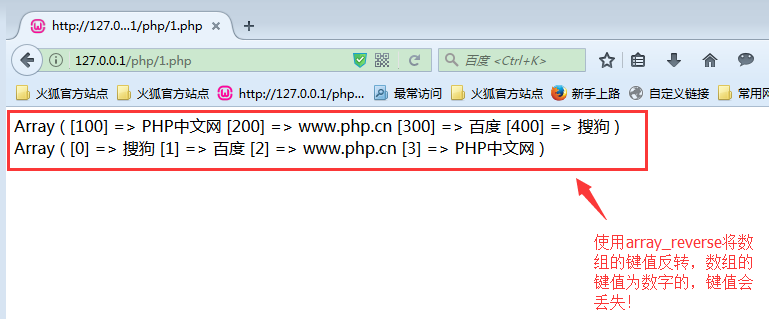
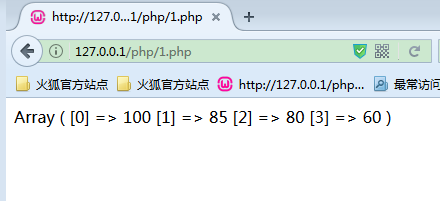



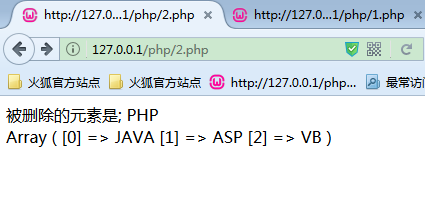

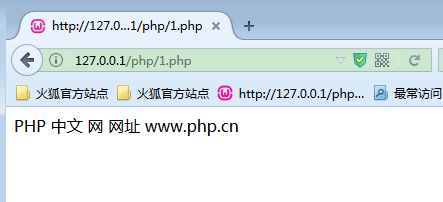


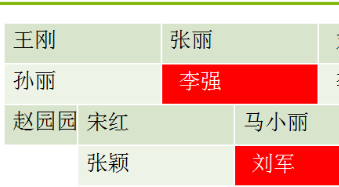
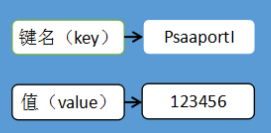







The above is the detailed content of Summary of php array function definition and usage. For more information, please follow other related articles on the PHP Chinese website!

Hot AI Tools

Undress AI Tool
Undress images for free

Undresser.AI Undress
AI-powered app for creating realistic nude photos

AI Clothes Remover
Online AI tool for removing clothes from photos.

Clothoff.io
AI clothes remover

Video Face Swap
Swap faces in any video effortlessly with our completely free AI face swap tool!

Hot Article

Hot Tools

Notepad++7.3.1
Easy-to-use and free code editor

SublimeText3 Chinese version
Chinese version, very easy to use

Zend Studio 13.0.1
Powerful PHP integrated development environment

Dreamweaver CS6
Visual web development tools

SublimeText3 Mac version
God-level code editing software (SublimeText3)
 PHP Variable Scope Explained
Jul 17, 2025 am 04:16 AM
PHP Variable Scope Explained
Jul 17, 2025 am 04:16 AM
Common problems and solutions for PHP variable scope include: 1. The global variable cannot be accessed within the function, and it needs to be passed in using the global keyword or parameter; 2. The static variable is declared with static, and it is only initialized once and the value is maintained between multiple calls; 3. Hyperglobal variables such as $_GET and $_POST can be used directly in any scope, but you need to pay attention to safe filtering; 4. Anonymous functions need to introduce parent scope variables through the use keyword, and when modifying external variables, you need to pass a reference. Mastering these rules can help avoid errors and improve code stability.
 Commenting Out Code in PHP
Jul 18, 2025 am 04:57 AM
Commenting Out Code in PHP
Jul 18, 2025 am 04:57 AM
There are three common methods for PHP comment code: 1. Use // or # to block one line of code, and it is recommended to use //; 2. Use /.../ to wrap code blocks with multiple lines, which cannot be nested but can be crossed; 3. Combination skills comments such as using /if(){}/ to control logic blocks, or to improve efficiency with editor shortcut keys, you should pay attention to closing symbols and avoid nesting when using them.
 Tips for Writing PHP Comments
Jul 18, 2025 am 04:51 AM
Tips for Writing PHP Comments
Jul 18, 2025 am 04:51 AM
The key to writing PHP comments is to clarify the purpose and specifications. Comments should explain "why" rather than "what was done", avoiding redundancy or too simplicity. 1. Use a unified format, such as docblock (/*/) for class and method descriptions to improve readability and tool compatibility; 2. Emphasize the reasons behind the logic, such as why JS jumps need to be output manually; 3. Add an overview description before complex code, describe the process in steps, and help understand the overall idea; 4. Use TODO and FIXME rationally to mark to-do items and problems to facilitate subsequent tracking and collaboration. Good annotations can reduce communication costs and improve code maintenance efficiency.
 Quick PHP Installation Tutorial
Jul 18, 2025 am 04:52 AM
Quick PHP Installation Tutorial
Jul 18, 2025 am 04:52 AM
ToinstallPHPquickly,useXAMPPonWindowsorHomebrewonmacOS.1.OnWindows,downloadandinstallXAMPP,selectcomponents,startApache,andplacefilesinhtdocs.2.Alternatively,manuallyinstallPHPfromphp.netandsetupaserverlikeApache.3.OnmacOS,installHomebrew,thenrun'bre
 Learning PHP: A Beginner's Guide
Jul 18, 2025 am 04:54 AM
Learning PHP: A Beginner's Guide
Jul 18, 2025 am 04:54 AM
TolearnPHPeffectively,startbysettingupalocalserverenvironmentusingtoolslikeXAMPPandacodeeditorlikeVSCode.1)InstallXAMPPforApache,MySQL,andPHP.2)Useacodeeditorforsyntaxsupport.3)TestyoursetupwithasimplePHPfile.Next,learnPHPbasicsincludingvariables,ech
 How to use PHP to build social sharing functions PHP sharing interface integration practice
Jul 25, 2025 pm 08:51 PM
How to use PHP to build social sharing functions PHP sharing interface integration practice
Jul 25, 2025 pm 08:51 PM
The core method of building social sharing functions in PHP is to dynamically generate sharing links that meet the requirements of each platform. 1. First get the current page or specified URL and article information; 2. Use urlencode to encode the parameters; 3. Splice and generate sharing links according to the protocols of each platform; 4. Display links on the front end for users to click and share; 5. Dynamically generate OG tags on the page to optimize sharing content display; 6. Be sure to escape user input to prevent XSS attacks. This method does not require complex authentication, has low maintenance costs, and is suitable for most content sharing needs.
 How to use PHP combined with AI to achieve text error correction PHP syntax detection and optimization
Jul 25, 2025 pm 08:57 PM
How to use PHP combined with AI to achieve text error correction PHP syntax detection and optimization
Jul 25, 2025 pm 08:57 PM
To realize text error correction and syntax optimization with AI, you need to follow the following steps: 1. Select a suitable AI model or API, such as Baidu, Tencent API or open source NLP library; 2. Call the API through PHP's curl or Guzzle and process the return results; 3. Display error correction information in the application and allow users to choose whether to adopt it; 4. Use php-l and PHP_CodeSniffer for syntax detection and code optimization; 5. Continuously collect feedback and update the model or rules to improve the effect. When choosing AIAPI, focus on evaluating accuracy, response speed, price and support for PHP. Code optimization should follow PSR specifications, use cache reasonably, avoid circular queries, review code regularly, and use X
 PHP calls AI intelligent voice assistant PHP voice interaction system construction
Jul 25, 2025 pm 08:45 PM
PHP calls AI intelligent voice assistant PHP voice interaction system construction
Jul 25, 2025 pm 08:45 PM
User voice input is captured and sent to the PHP backend through the MediaRecorder API of the front-end JavaScript; 2. PHP saves the audio as a temporary file and calls STTAPI (such as Google or Baidu voice recognition) to convert it into text; 3. PHP sends the text to an AI service (such as OpenAIGPT) to obtain intelligent reply; 4. PHP then calls TTSAPI (such as Baidu or Google voice synthesis) to convert the reply to a voice file; 5. PHP streams the voice file back to the front-end to play, completing interaction. The entire process is dominated by PHP to ensure seamless connection between all links.







